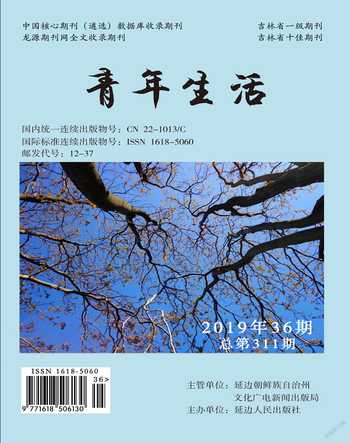On the development of literal translation and free translation in Translation
曹梦娜 罗岚
摘要: Based on the comparative study of these two translation activities, this paper summarizes the common law of the development of Buddhist scripture translation and Bible Translation Theory: the two principles of literal translation and free translation alternately dominate the translation activities and gradually become mature until the organic integration of the two is finally realized, and analyzes the reasons simply from the methods of religious belief and historical materialism.
關键词:literal translation; free translation; Buddhist scripture translation; Bible Translation
I. The similarity of ancient religious translation between China and the West
1. Buddhist Scripture Translation
Buddhist scripture translation is from Sanskrit to Chinese. It has a long history and many translators. The number of Buddhist scriptures translation is unprecedented in the history of world translation. Kumarashi of the pre Qin Dynasty created a new way of free translation of Buddhist scriptures, which not only took full account of the language habits of the Chinese people, but also tried to keep the original meaning of Sanskrit. Although Roche advocates free translation, he never translates randomly. His translation method is pure. His translation has opened a new era of ancient Buddhist Scripture Translation in China, which is known as "new translation".
2. Bible Translation
In the early stage of Bible translation, due to the unfamiliarity with the language environment, it followed the original step by step. The only purpose of Bible translation was to transfer the original content and copy the original style. In this period, literal translation was basically adopted. Seventy Greek texts are typical of this kind of literal translation.
II.The reasons for the development of translation theory
1. Religious beliefs
From the perspective of religious belief, it is the religious belief of the translator and the general public that determines the translation style of the whole religious classics. The translators of Buddhist scriptures and Bible are almost all devout religious believers. In their eyes, religious scriptures are unchangeable holy "God's will". It would be sacrilege to God to add, delete or modify any content in the process of translation. Therefore, the Chinese Buddhist scripture translation and the European Bible translation adopt the same strategy of literal translation, which shows the translator's loyalty to God and maintains the sanctity of religious classics. The transformation of the translation theory of religious classics from literal translation to free translation is fundamentally based on the need to spread religious ideas. Therefore, it is in order to meet the reading requirements of the common people, considering their knowledge and literacy, the translation of religious classics must be close to the direction of popularization and popularization, and the rise of free translation is unstoppable.
2. Historical materialism
According to the historical view of translation of historical materialism, any translation practice and theory should not be isolated from the era of its existence and development, but should be related to its era, with specific sociality and contemporaneity. The continuous enrichment of human knowledge and experience and the development of social politics, culture and ideology determine the general direction of the development of translation practice and translation theory. Due to the different experience, intelligence and mental state of different translators in different periods, the quality of the translation and the views put forward will be different according to different people. However, from the perspective of the whole history of translation development, the quality of translation has been improved from poor to good, so as to meet people's higher and higher requirements. Under the influence of social development, translation theory has gradually developed from nothing to maturity in a certain direction.
Conclusion
The development of literal translation and free translation in Buddhist scriptures and Bible translation theory has gone through the process from naive literal translation to naive free translation, and from more mature literal translation to more mature free translation, and finally to realize the organic combination of literal translation and free translation. In terms of the reasons for its development, from the perspective of religious belief, the translator will adopt literal translation strategy to translate religious books for the fear of God, and then adopt free translation strategy to translate religious books for the purpose of spreading doctrines; from the perspective of historical materialism, the development of literal translation and free translation theory conforms to the development of translation history, that is, from poor to good Exhibition.

